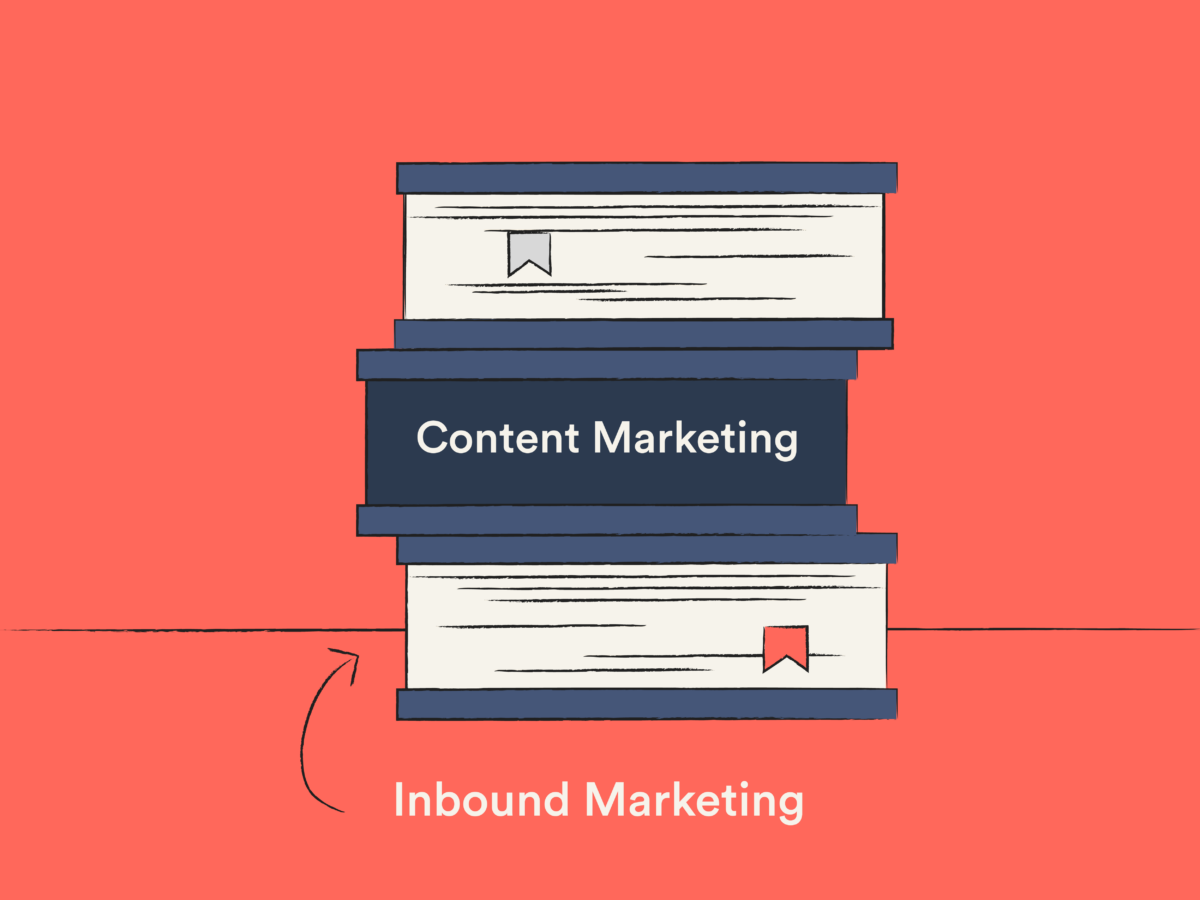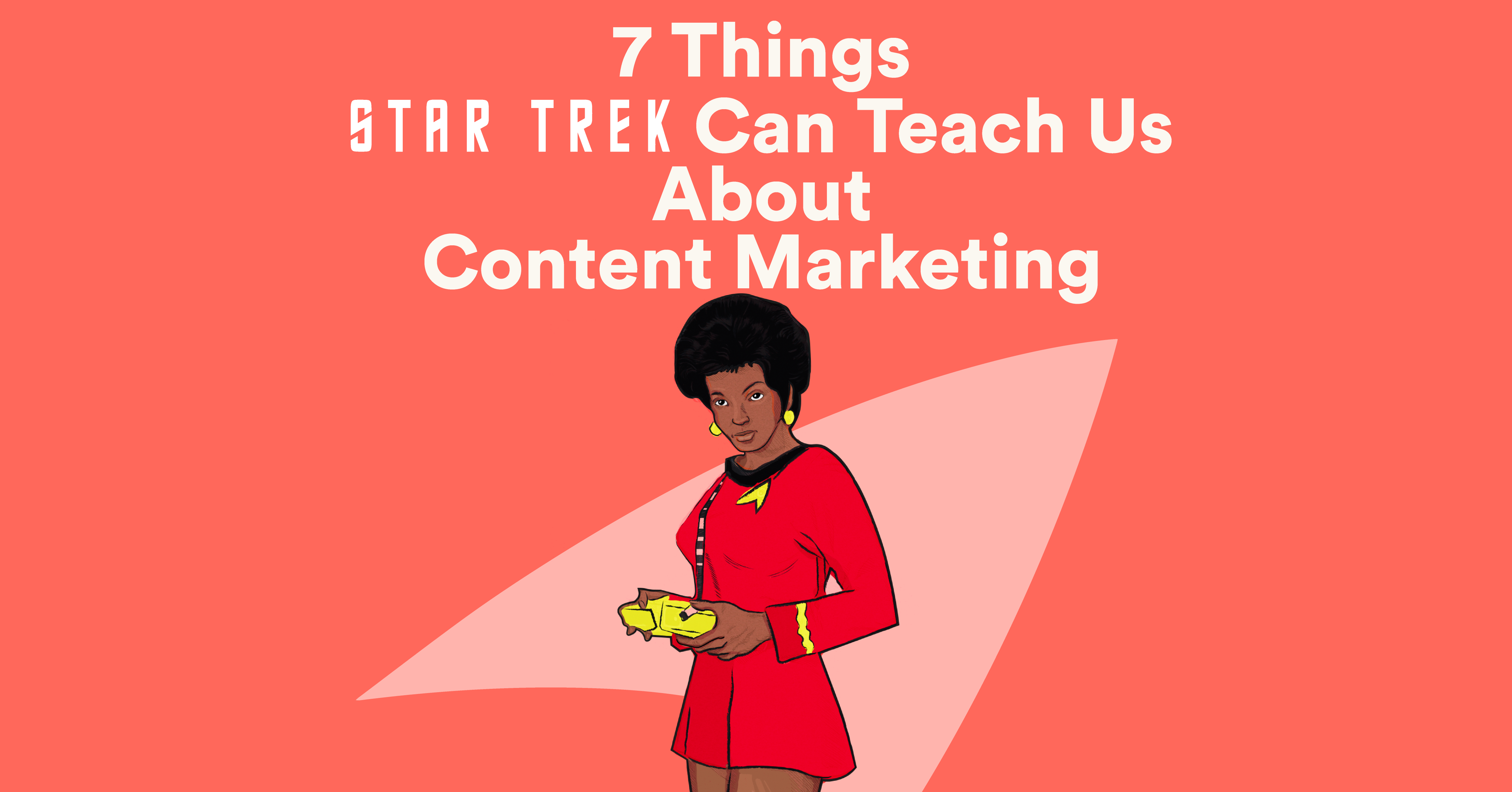Understanding the different types of traditional marketing can be incredibly difficult. The industry is full of technical abbreviations, contradicting tactics, and definitions that need to be clarified.
Included in this article are the terms content marketing and inbound marketing, which are often used interchangeably. However, while these concepts share some similarities, they have distinct characteristics and approaches that set them apart.
In this comprehensive guide, we aim to clear up any confusion by providing a clear understanding of what content marketing and inbound marketing truly mean. We will explore their definitions and uncover the key differences between the two.
By the end of this blog, you and your marketing team will have a solid grasp of these concepts meaning that you will be fully equipped with this essential knowledge for your next marketing campaign.
What is an inbound marketing strategy?
An inbound marketing plan can be defined as a holistic approach to the marketing process that focuses on attracting, engaging, and converting potential customers through valuable content.
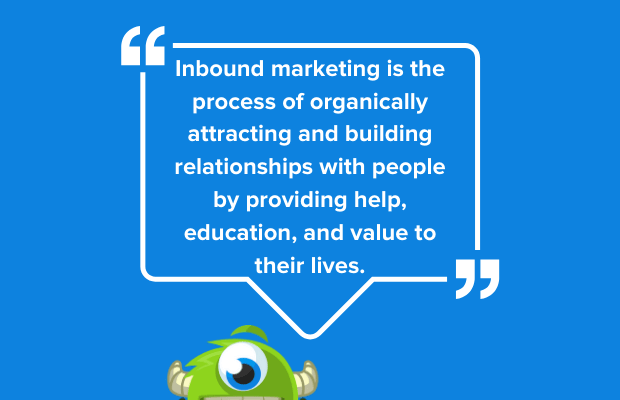
There are two contrasting forms of traditional marketing called inbound and outbound marketing.
Traditional outbound marketing methods rely on interruptive tactics – those methods that interrupt the daily lives of consumers. These include:
- Cold calling
- Search engine advertisements
- Direct mail
- Television advertisements
- Email marketing
- Social media adverts
In stark contrast, the inbound methodology aims to ‘pull’ in potential customers organically by providing them with information and content that align with their needs.
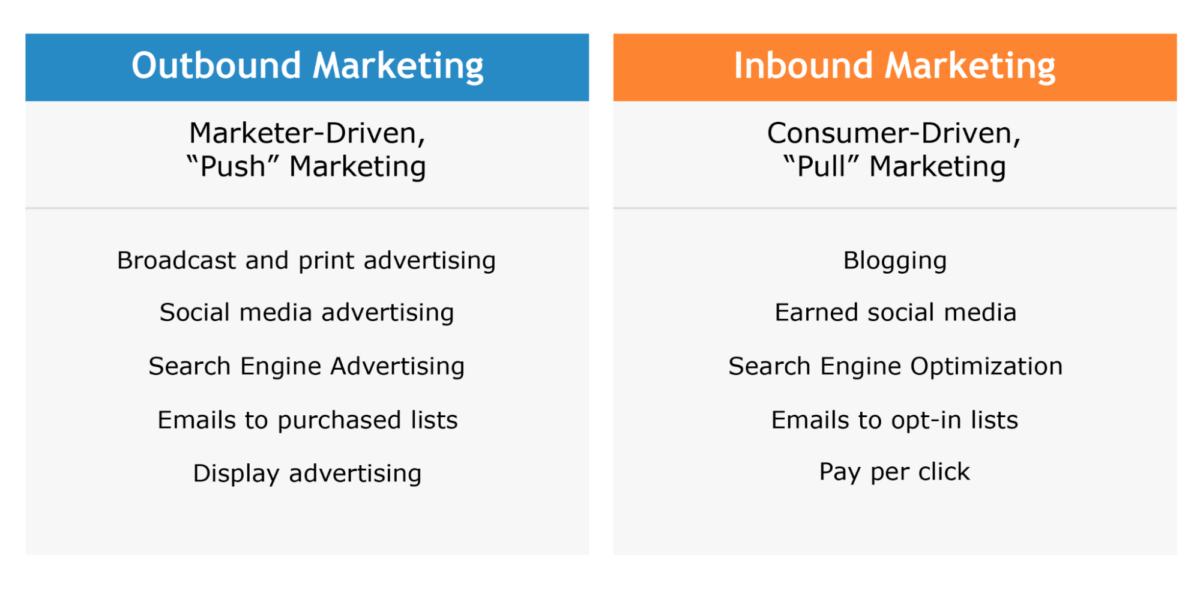
The central principle of this marketing tactic is the concept of creating and sharing high-quality content that resonates with the target audience. This content can take various forms, such as:
- Blog articles
- Videos
- Podcasts
- E-books
- Webinars
- Social media posts.
The goal of this content is to offer valuable insights, answer common questions, solve problems, and provide relevant information that empowers potential customers.

One of the key ideas behind inbound strategy is the idea of attracting qualified leads rather than pursuing a broader demographic. This is done by creating a buyer persona that allows business owners to understand the characteristics, preferences, and pain points of their ideal customers.
With this knowledge, marketers can create content that appeals specifically to their key demographic. This approach drastically increases the likelihood of attracting individuals who are genuinely interested in the product or service being offered.

Another fundamental aspect of this marketing technique is the concept of the buyer’s journey. This involves understanding the three different stages a potential customer goes through, which are:
- Awareness: The consumer is experiencing a pain point that they seek to resolve.
- Consideration: The potential customer starts to research a solution for their problem.
- Decision: The individual has decided on a method and is now selecting a specific provider.
By aligning a content strategy with each stage of this journey, inbound marketing enables businesses to guide prospects through the sales funnel whilst building trust and credibility along the way.
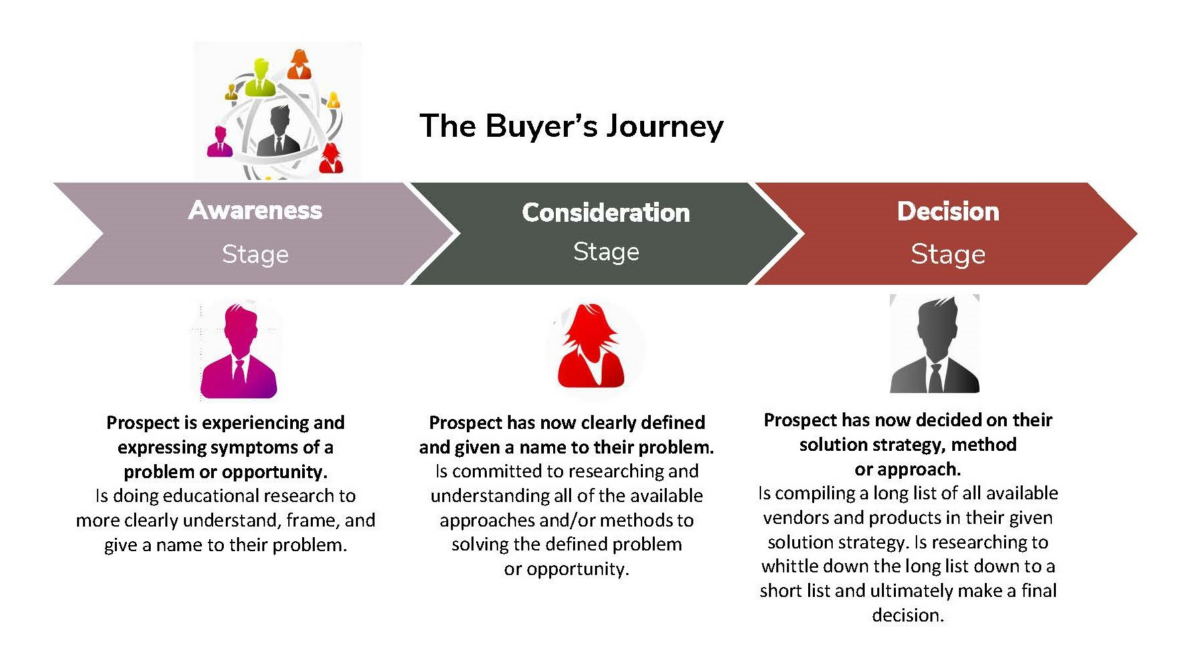
What is a content marketing strategy?
A content marketing plan is a strategic marketing approach that involves creating, publishing, and distributing useful content to generate brand awareness for your company. It focuses on delivering information, insights, and resources that are meaningful to potential customers, with the ultimate goal of guiding consumer behavior via calls to action.

The central concept of content marketing revolves around providing content that is valuable and relevant to the audience. This can take many forms, including:
- Blog posts
- Articles
- Videos
- Podcasts
- Infographics
- E-books
- Case studies
- White papers
- Social media posts on Facebook, LinkedIn, Twitter, Instagram, and TikTok

Content marketing goes beyond traditional advertising by aiming to build trust, credibility, and relationships with the audience. Rather than directly pitching products or services, it focuses on addressing the target audience’s needs, wants, and interests by positioning the organization as an industry thought leader.

Distribution and promotion play a vital role in marketing content through a wide variety of different channels, like:
- Landing pages
- Blogs
- Social media platforms
- Email newsletters
- Guest blogging on relevant websites
- Industry publications
The ultimate goal is to reach the target audience where they already are and engage them with valuable content that encourages interaction.
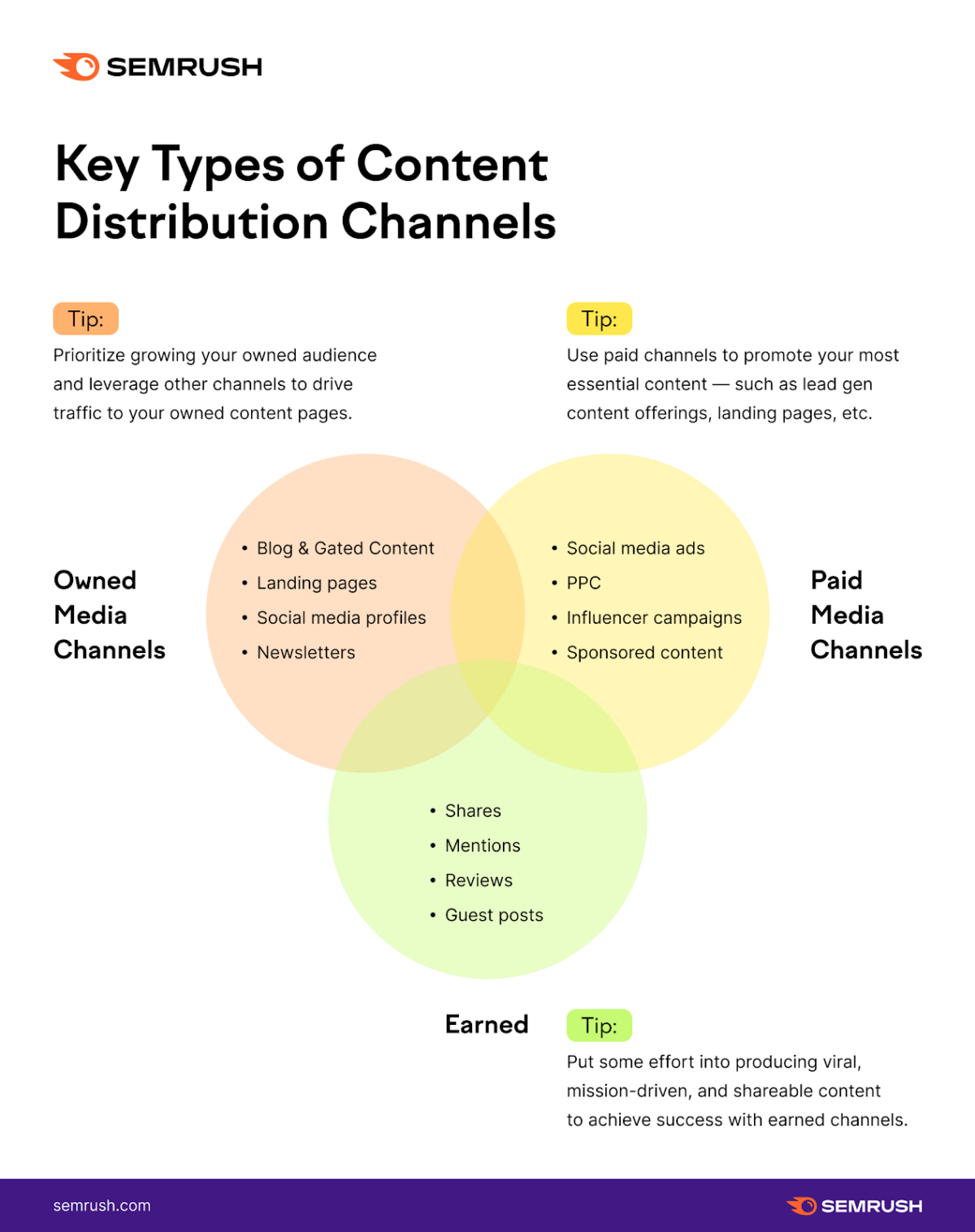
Measuring the effectiveness of content marketing is essential for refining strategies and achieving desired outcomes. It is important to use varied and diverse metrics such as:
- Website traffic
- Likes
- Comments
- Shares
- Conversion rates
- Lead generation
- Customer retention
These essential points of reference provide vital insights into the performance of content marketing efforts and can help optimize future campaigns.

Key differences between content marketing and inbound marketing
Content marketing and inbound marketing are two closely related strategies that aim to attract audiences via engagement, but they do have some distinct characteristics. Below is a table that showcases the key differences between the two techniques.
| Difference | Content marketing | Inbound marketing |
| Focus | This technique revolves around creating and distributing valuable, relevant, but also consistent content to attract a target audience. It focuses primarily on creating compelling content across various channels, such as blog posts, videos, infographics, and social media. | Inbound marketing focuses on attracting customers through relevant and helpful content. However, it also includes a combination of other tactics like search engine optimization (SEO), social media marketing, email marketing, digital marketing, lead generation, and lead nurturing. |
| Goal | Content marketing is primarily focused on creating and delivering content to address the needs of a target audience. The goal is to build trust, authority, and brand awareness by providing informative, entertaining, or educational content that resonates with prospective customers. | Inbound marketing takes a more holistic approach focusing on attracting, engaging, and converting leads into customers. It combines multiple strategies to create a comprehensive marketing funnel that guides prospects through the buyer’s journey. |
| Lead generation and conversion | Content marketing plays a crucial role in lead generation by attracting prospects through valuable content and building a loyal audience. However, the primary focus of content marketing is not necessarily on converting leads into customers directly. It aims to establish credibility and foster long-term relationships. | Inbound marketing aims to attract leads and guide them through the entire buyer’s journey, from awareness to the decision-making stage. These strategies work together to generate leads, nurture them with relevant content, and convert them into customers. |
| Channels | This approach relies on various formats and channels to distribute valuable content. These can include blog articles, videos, podcasts, infographics, social media posts, ebooks, whitepapers, and more. The focus is on creating high-quality content that resonates with the target audience and encourages engagement. | Inbound marketing incorporates a broader range of tactics and channels. In addition to content marketing, it may also incorporate search engine optimization to improve organic visibility, social media marketing to engage with the audience, email marketing to nurture leads, and much more. |
| Audience engagement | Content marketing aims to captivate the audience through content. It focuses on building brand loyalty, encouraging social sharing, and fostering a sense of community. The emphasis is on creating content that resonates with the audience’s interests, challenges, and aspirations. | Inbound marketing takes a more personable approach to audience engagement. While content marketing is indeed an integral part, inbound marketing utilizes various channels and tactics to engage with prospects at different stages of the buyer’s journey. This includes personalized email campaigns, social media interactions, targeted ads, and tailored landing pages to provide a personalized experience. |
| Metrics | Content marketing metrics often revolve around content performance, including metrics like page views, time on the page, social shares, comments, and backlinks. The focus is on evaluating the reach, engagement, and impact of the content on the target audience. | Inbound marketing considers a broader set of metrics to measure its effectiveness in generating leads and conversions. These metrics include website traffic, lead generation, lead-to-customer conversion rates, customer acquisition costs, customer lifetime value, and return on investment. Inbound marketing takes a more holistic approach to measuring the overall marketing funnel’s performance and its impact on business goals. |
| Lead nurturing and sales alignment | Content marketing primarily focuses on building awareness and establishing thought leadership by providing insightful content. While it may indirectly contribute to lead nurturing, content marketing does not always include a specific framework for guiding leads through the sales funnel. | Inbound marketing places a strong emphasis on lead nurturing and aligning marketing efforts with sales goals. It incorporates tactics like marketing automation, lead scoring, and lead nurturing workflows to deliver personalized content at different stages of the buyer’s journey. Inbound marketing aims to deliver the right content to the right people at the right time, ultimately driving conversions and revenue. |
| Customer retention | Content marketing can contribute to consumer satisfaction by continuing to provide valuable content to existing customers. However, its primary focus is on attracting and engaging new prospects rather than retention strategies. | This type of marketing recognizes the importance of customer retention as a crucial part of the overall strategy. Inbound marketing strategies include customer retention tactics like personalized email campaigns, loyalty programs, customer feedback mechanisms, and ongoing engagement through relevant content. The goal is to turn customers into brand advocates and foster long-term relationships. |
Marketing mayhem
Now that we have clearly defined the differences between inbound and content marketing, we feel it is our obligation to remind readers that there are many other marketing strategies that are begging to be utilized. These include, but are in no way limited to:
- Influencer marketing
- Outbound marketing
- Digital marketing
- Search engine marketing
- Social media marketing
- Buzz marketing
- Conversational marketing
- Voice marketing
- H2H marketing
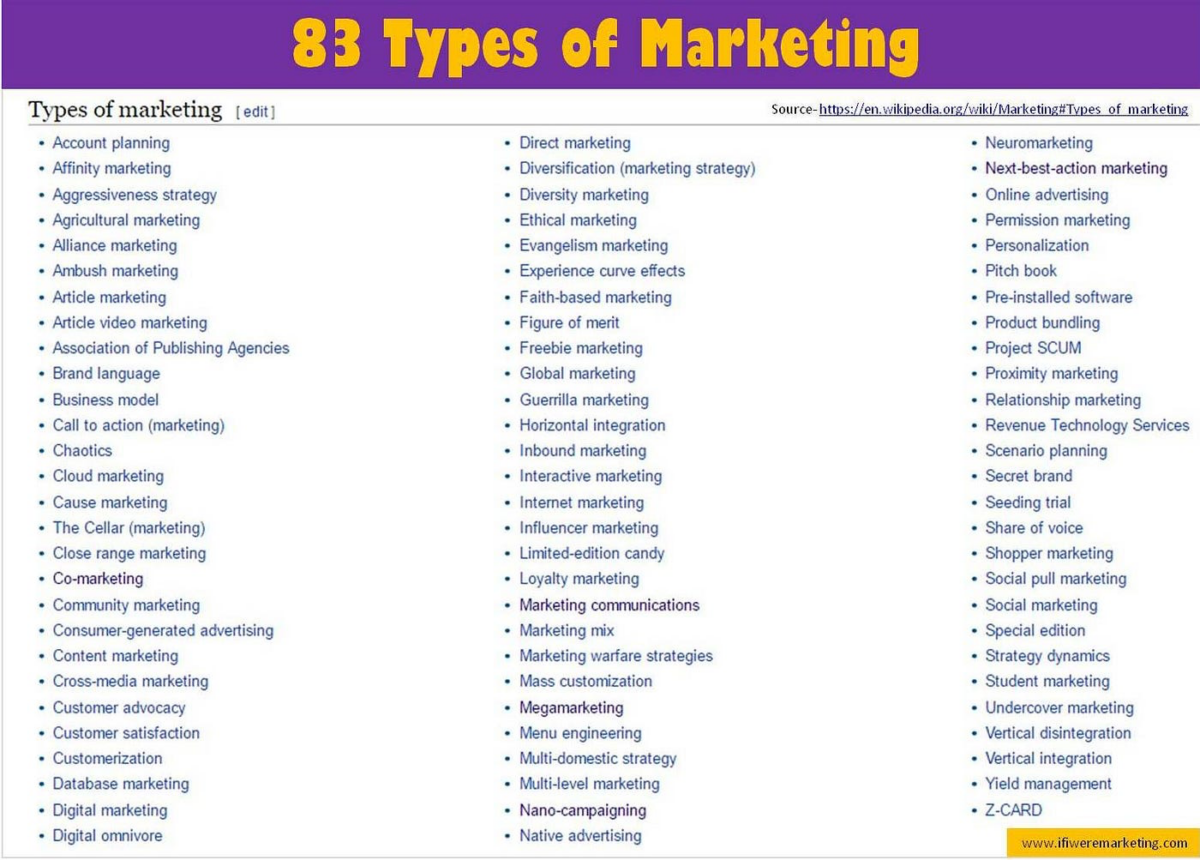
Take a breather; we know the sheer volume of different marketing strategies can seem rather overwhelming. We recommend taking some time to research and familiarize yourself with as many techniques as possible using the countless resources available on the web.
Remember to keep an eye on the Literal Humans blog for high-quality content that explores countless marketing strategies and other business know-how.

